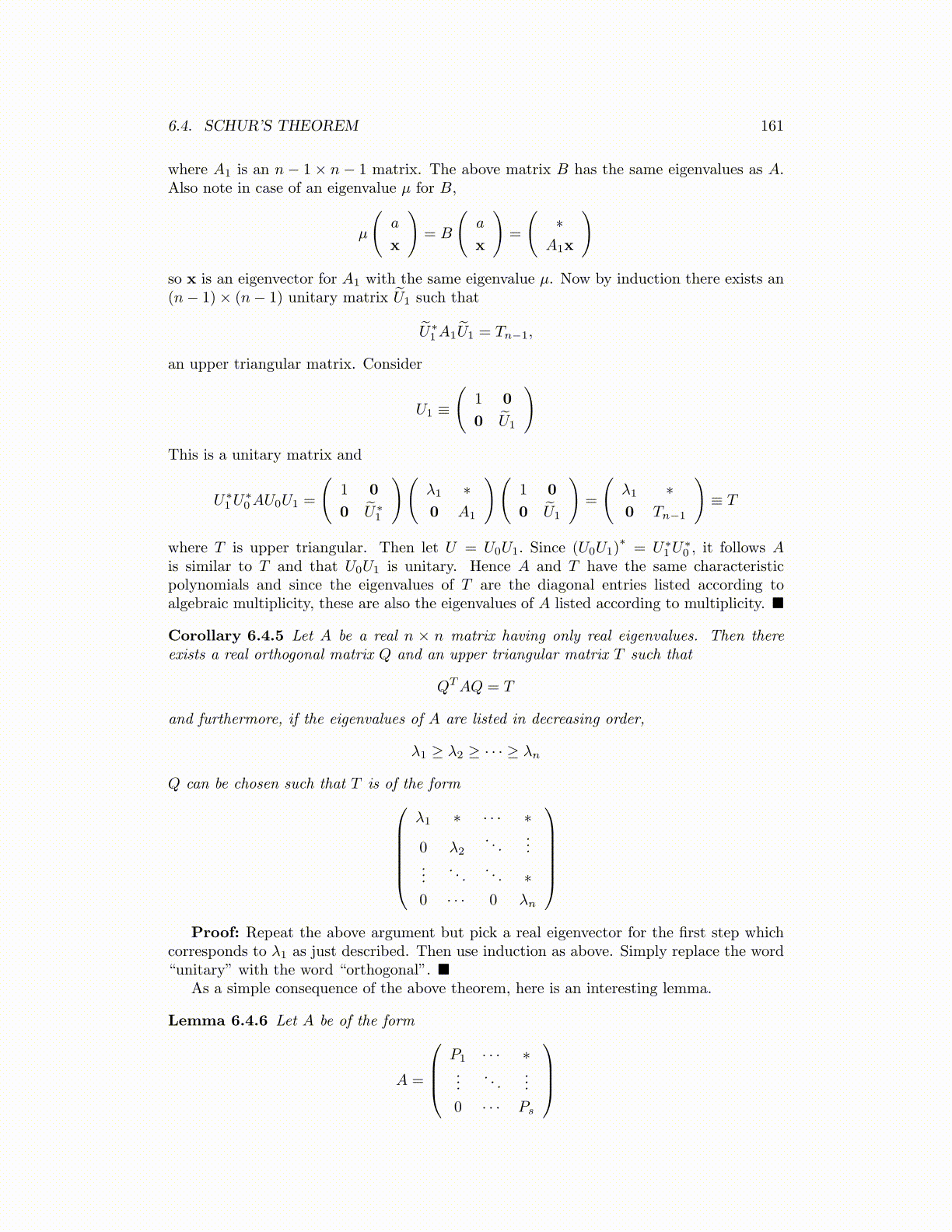
6.4. SCHUR’S THEOREM 161
where A1 is an n − 1 × n − 1 matrix. The above matrix B has the same eigenvalues as A.Also note in case of an eigenvalue µ for B,
µ
(a
x
)= B
(a
x
)=
(∗
A1x
)so x is an eigenvector for A1 with the same eigenvalue µ. Now by induction there exists an(n− 1)× (n− 1) unitary matrix Ũ1 such that
Ũ∗1A1Ũ1 = Tn−1,
an upper triangular matrix. Consider
U1 ≡
(1 0
0 Ũ1
)This is a unitary matrix and
U∗1U
∗0AU0U1 =
(1 0
0 Ũ∗1
)(λ1 ∗0 A1
)(1 0
0 Ũ1
)=
(λ1 ∗0 Tn−1
)≡ T
where T is upper triangular. Then let U = U0U1. Since (U0U1)∗= U∗
1U∗0 , it follows A
is similar to T and that U0U1 is unitary. Hence A and T have the same characteristicpolynomials and since the eigenvalues of T are the diagonal entries listed according toalgebraic multiplicity, these are also the eigenvalues of A listed according to multiplicity. ■
Corollary 6.4.5 Let A be a real n × n matrix having only real eigenvalues. Then thereexists a real orthogonal matrix Q and an upper triangular matrix T such that
QTAQ = T
and furthermore, if the eigenvalues of A are listed in decreasing order,
λ1 ≥ λ2 ≥ · · · ≥ λn
Q can be chosen such that T is of the formλ1 ∗ · · · ∗
0 λ2. . .
......
. . .. . . ∗
0 · · · 0 λn
Proof: Repeat the above argument but pick a real eigenvector for the first step which
corresponds to λ1 as just described. Then use induction as above. Simply replace the word“unitary” with the word “orthogonal”. ■
As a simple consequence of the above theorem, here is an interesting lemma.
Lemma 6.4.6 Let A be of the form
A =
P1 · · · ∗...
. . ....
0 · · · Ps